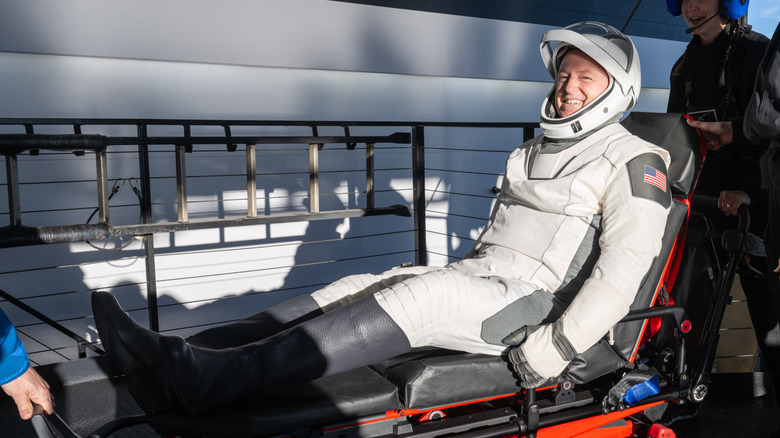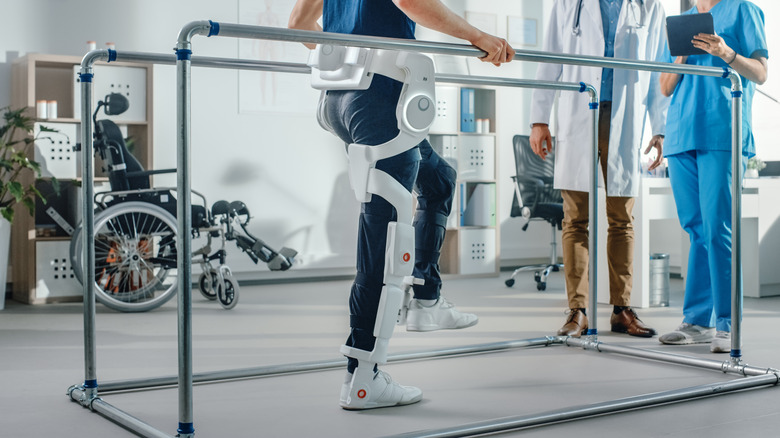How Long Does It Take For Astronauts To Recover After Returning To Earth?
The Human Research Program at NASA has been studying how space travel affects the human body for almost as long as the organization has been established. The program has found that one of the bad things about space exploration is that the conditions in space can permanently damage astronauts. For instance, microgravity affects the bones and muscles of astronauts and can cause vision problems. Fortunately, some of the effects that space has on the body are reversible, such as the inability to stand and the loss of basic motor control when astronauts return to Earth. That's why astronauts go through a 45-day reconditioning and rehabilitation program.
University of South Wales professor Damian Bailey told the BBC, "Space is by far the most extreme environment that humans have ever encountered and we've just not evolved to handle the extreme conditions." Before and during space expeditions, astronauts undergo medical training and body conditioning to make sure that they're in tip-top shape and can respond well to health issues as they arise. They routinely check their blood, body weight, strength, urine, vision, and more to track the changes in their bodies.
Upon their return to Earth, the Astronaut Strength, Conditioning and Rehabilitation (ASCR) group can customize the reconditioning program according to each astronaut's needs. While a 45-day program is sufficient for most, those who stay in space for extended missions may need longer and more comprehensive rehabilitation. Still, it can take years for some astronauts to recover completely.
What does the rehabilitation program look like for astronauts?
During expeditions on the International Space Station (ISS), astronauts are banned from doing several things, such as drinking alcohol. They're even banned from eating certain foods on the ISS, such as bread and carbonated drinks. However, one important part of their daily routine is exercising for two hours using a cycling machine, treadmill, and weights. Despite that, weightlessness takes its toll on how their bodies function under the pull of gravity on Earth. That's why the ASCR group devises a full spectrum of physical exercises and musculoskeletal medicine services to get them as close to preflight fitness as possible.
After assessing and customizing the reconditioning program, the medical team is careful to reintroduce the astronauts to Earth's gravity without hurting them. To help the astronauts regain their agility, balance, and coordination first, they undergo back, gait, and lower limb training. Astronaut Tim Peake, who visited the ISS in 2015, recalled in a statement with the BBC, "That initial phase of stopping feeling dizzy, of regaining your balance and having strength to walk around normally, that's just two or three days. Those first two or three days back on Earth can be really punishing."
The second phase of rehabilitation activities usually includes using cycling, rowing, and elliptical machines to improve their cardiovascular health and range of motion and to strengthen their muscles. On top of the physical therapy, mental health support is provided through mindfulness and stress management techniques to help the astronauts deal with anxiety and feelings of isolation as they transition back to life on Earth.

